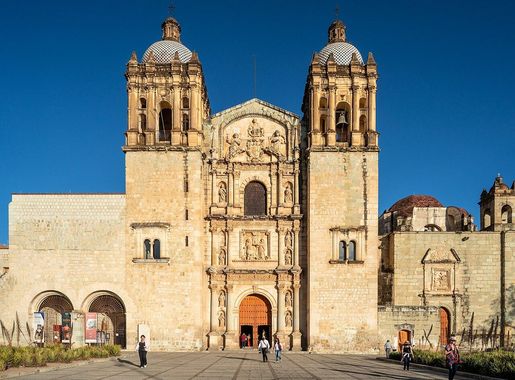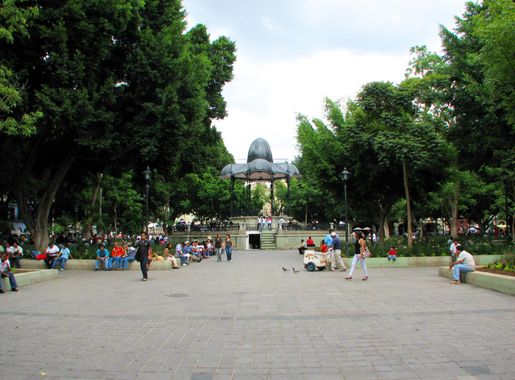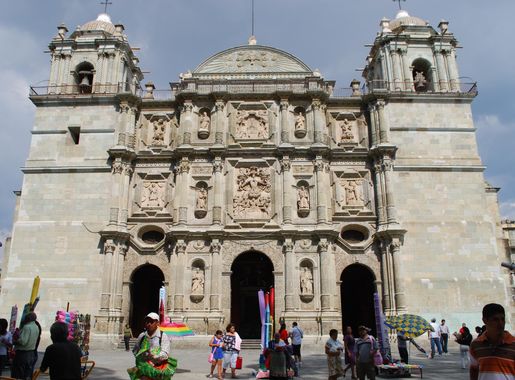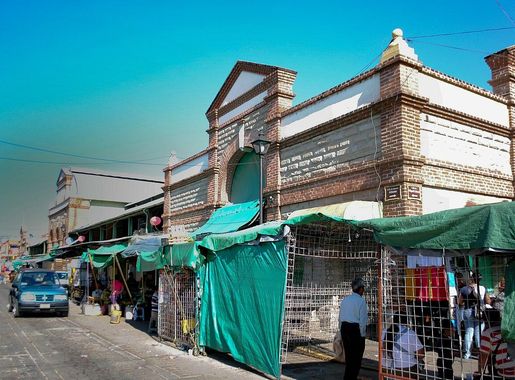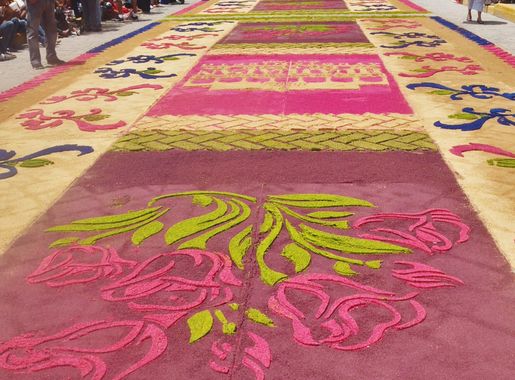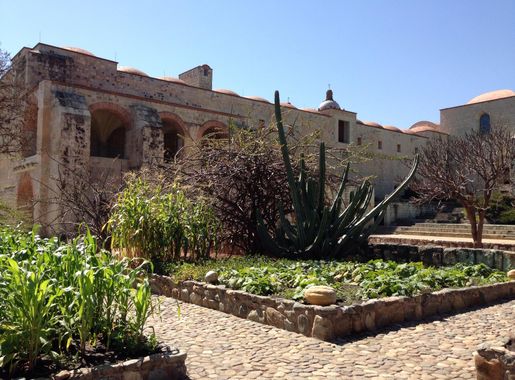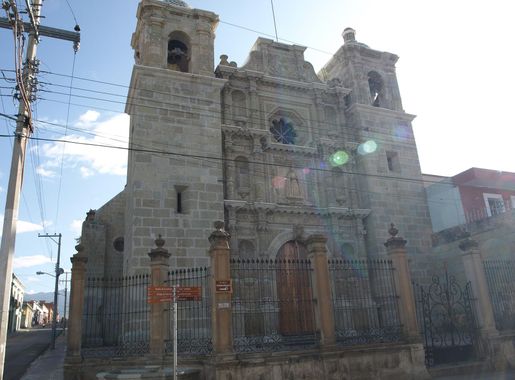
Centro Histórico: The Heartbeat of Oaxaca
Centro Histórico in Oaxaca: A vibrant blend of culture, history, and culinary delights awaits you in this charming neighbourhood.
Centro Histórico in Oaxaca is a vibrant and culturally rich neighbourhood that serves as the epicentre of the city's historical and artistic heritage. The area is renowned for its colonial architecture, charming cobblestone streets, and a plethora of beautifully preserved churches, museums, and galleries. Walking through the narrow lanes, you'll be enveloped by the alluring aroma of traditional Oaxacan cuisine wafting from local eateries and street food vendors. The Zócalo, or main square, is the beating heart of Centro Histórico, where both locals and tourists gather to enjoy live music, peruse artisanal markets, and soak in the lively atmosphere. Nearby, the iconic Santo Domingo Church and its adjoining cultural centre offer an insightful glimpse into the region's rich history and religious significance. Centro Histórico is also a culinary haven, boasting some of the best dining experiences in Oaxaca. From high-end restaurants serving innovative takes on traditional dishes to bustling markets like Mercado Benito Juárez, where you can sample local delicacies such as tlayudas and mole, the neighbourhood is a food lover's paradise. The evening transforms the area into a hub of nightlife, with mezcalerías and bars offering a taste of Oaxaca's famed mezcal.
Local tips in Centro Histórico
- Visit the Zócalo in the evening to experience live music and a lively atmosphere.
- Don't miss the Mercado Benito Juárez for authentic Oaxacan street food.
- Carry cash, as many local vendors and small eateries do not accept credit cards.
- Wear comfortable shoes for walking on cobblestone streets.
- Visit the Santo Domingo Church and Cultural Centre early to avoid crowds.
Centro Histórico: The Heartbeat of Oaxaca
Centro Histórico in Oaxaca is a vibrant and culturally rich neighbourhood that serves as the epicentre of the city's historical and artistic heritage. The area is renowned for its colonial architecture, charming cobblestone streets, and a plethora of beautifully preserved churches, museums, and galleries. Walking through the narrow lanes, you'll be enveloped by the alluring aroma of traditional Oaxacan cuisine wafting from local eateries and street food vendors. The Zócalo, or main square, is the beating heart of Centro Histórico, where both locals and tourists gather to enjoy live music, peruse artisanal markets, and soak in the lively atmosphere. Nearby, the iconic Santo Domingo Church and its adjoining cultural centre offer an insightful glimpse into the region's rich history and religious significance. Centro Histórico is also a culinary haven, boasting some of the best dining experiences in Oaxaca. From high-end restaurants serving innovative takes on traditional dishes to bustling markets like Mercado Benito Juárez, where you can sample local delicacies such as tlayudas and mole, the neighbourhood is a food lover's paradise. The evening transforms the area into a hub of nightlife, with mezcalerías and bars offering a taste of Oaxaca's famed mezcal.
Iconic landmarks you can’t miss
Zócalo (Plaza de la Constitución)
Discover the vibrant culture, history, and community spirit at the Zócalo, Oaxaca's iconic city park and gathering place.
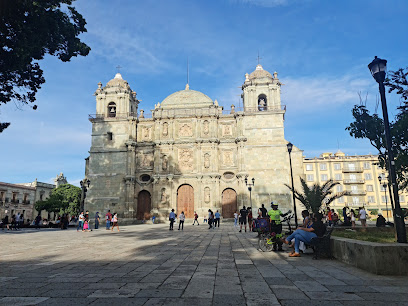
Plaza de la Danza
Discover the beauty and culture of Plaza de la Danza, a historic park in the heart of Oaxaca, perfect for relaxation and exploration.
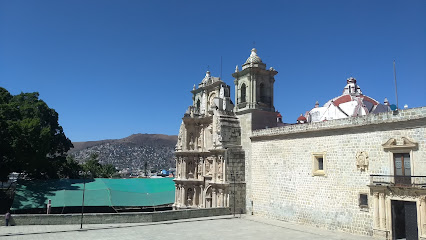
Jardín Etnobotánico de Oaxaca
Explore the breathtaking Jardín Etnobotánico de Oaxaca, a vibrant botanical garden showcasing the region's rich biodiversity and cultural heritage.
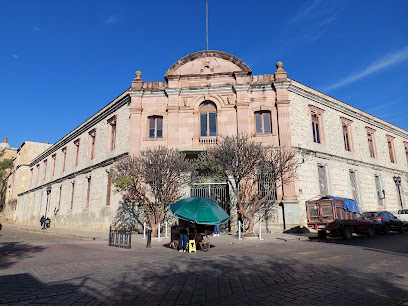
Fuente de las 8 Regiones
Discover the enchanting Fuente de las 8 Regiones in Oaxaca, a stunning fountain that celebrates the rich cultural diversity of the region.
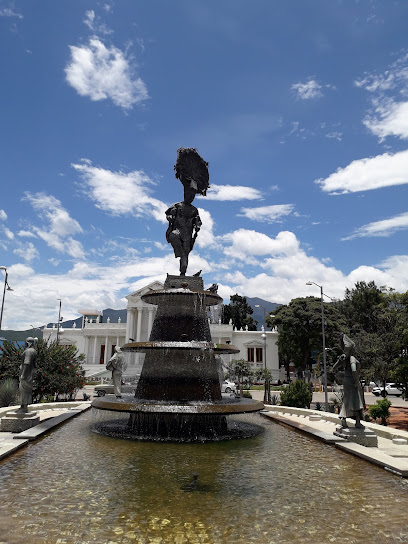
Centro Cultural San Pablo
Discover the rich artistic heritage of Oaxaca at Centro Cultural San Pablo, a vibrant cultural center showcasing local art and community spirit.
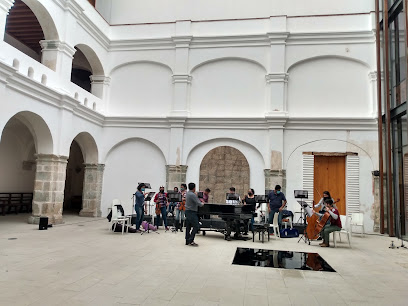
Domino's Pizza
Experience a delicious blend of local flavors and classic pizzas at Domino's Pizza in the heart of Oaxaca, perfect for a quick meal on the go.
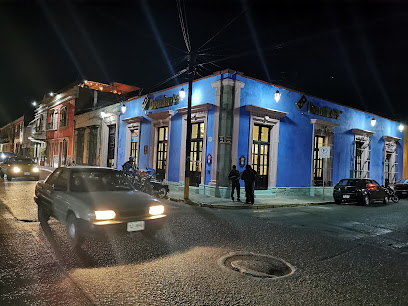
Holiday Inn Express Oaxaca-Centro Historico, an IHG Hotel
Experience the vibrant culture of Oaxaca from the comfort of the Holiday Inn Express, your gateway to rich history and local charm.

Ex Convento de San Pablo
Explore the rich cultural heritage and artistic legacy of Oaxaca at the historic Ex Convento de San Pablo, a must-visit museum and cultural center.
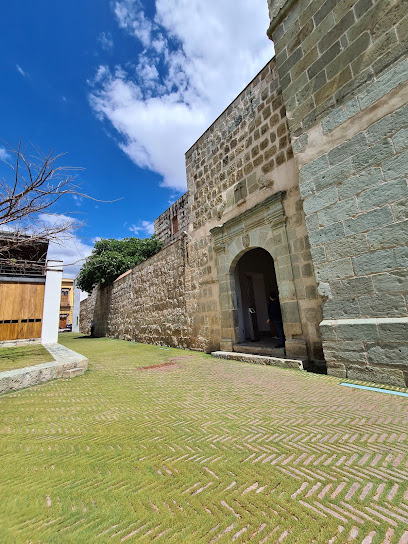
EX CONVENTO DE LOS 7 PRINCIPES
Discover the Ex Convento de los 7 Príncipes, a captivating museum in Oaxaca that unveils the region's rich cultural and historical heritage.
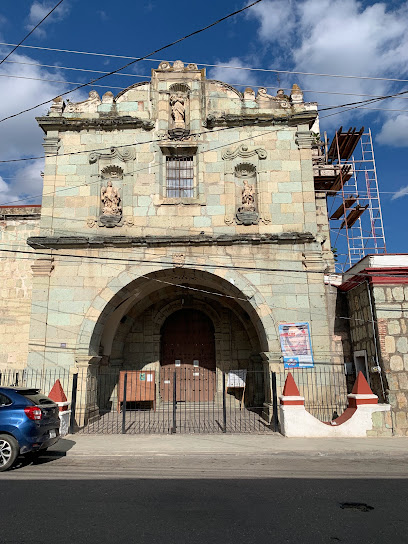
Barrio Xochimilco, Oaxaca
Discover the vibrant streets and rich culture of Barrio Xochimilco in Oaxaca, a must-visit destination for an authentic Oaxacan experience.
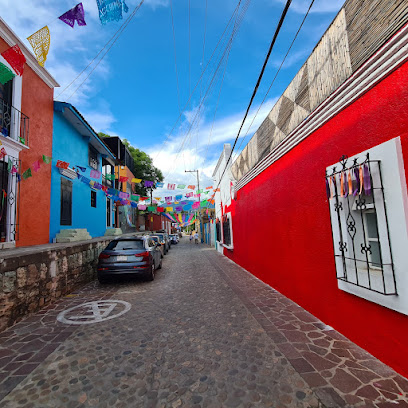
UNESCO Centro Histórico Patrimonio Cultural de la Humanidad
Discover the enchanting UNESCO Centro Histórico in Oaxaca, where history, culture, and vibrant local traditions come together in a breathtaking setting.
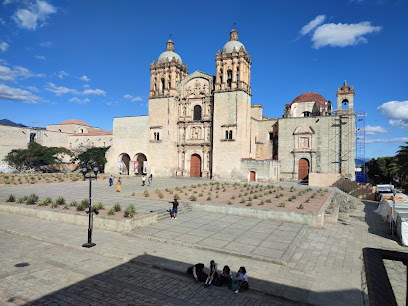
Monumento Cruz de Piedra
Discover the Monumento Cruz de Piedra in Oaxaca, a historical landmark that showcases the region's rich cultural heritage and stunning architectural beauty.
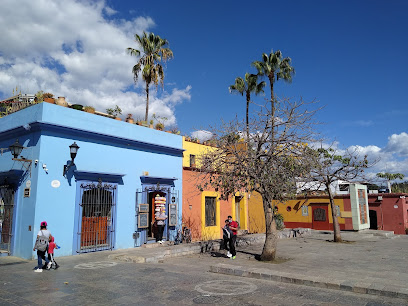
Dirección General del Centro Historico
Explore the heart of Oaxaca's rich history at the Dirección General del Centro Histórico, a key site for culture and preservation.
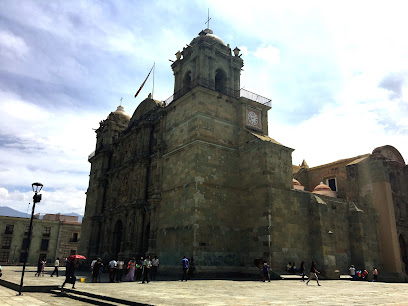
Unmissable attractions to see
Zócalo (Plaza de la Constitución)
Explore the lively Zócalo of Oaxaca, a cultural hub filled with stunning architecture, local festivities, and delicious Oaxacan cuisine.
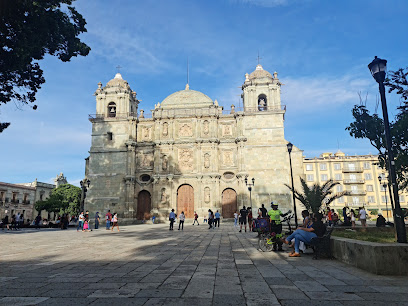
El Llano
Discover the beauty of El Llano, a serene city park in Oaxaca, perfect for relaxation and cultural experiences amidst lush greenery.
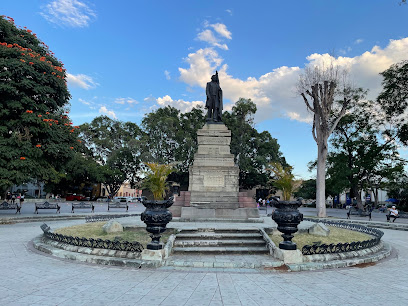
Plaza de la Danza
Discover the vibrant culture and history at Plaza de la Danza, a captivating city park in the heart of Oaxaca, renowned for its picturesque beauty and cultural events.
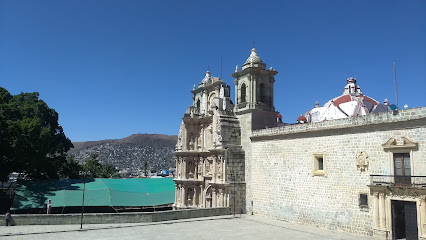
Jardín Conzatti
Experience the tranquility of Jardín Conzatti, a lush garden in Oaxaca offering a peaceful retreat with vibrant flora and rich cultural heritage.
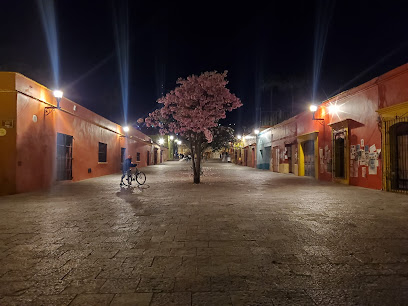
Jardín San Francisco
Explore the lush beauty and historical charm of Jardín San Francisco, a serene garden oasis in the heart of Oaxaca, perfect for relaxation and exploration.
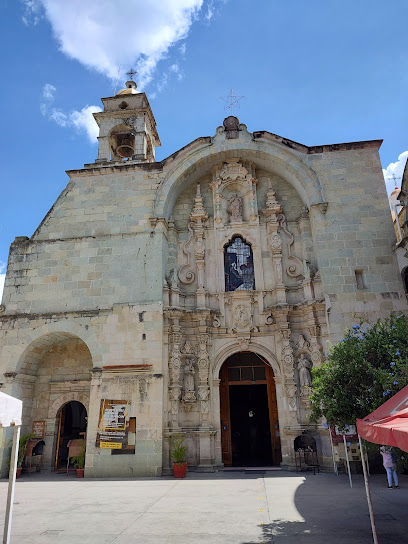
Jardín Etnobotánico de Oaxaca
Discover the rich biodiversity and cultural heritage at Oaxaca's stunning Jardín Etnobotánico, a must-visit botanical garden for every traveler.
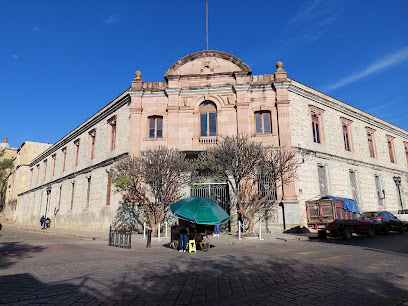
Oaxaca Artisan Market
Explore the Oaxaca Artisan Market, where vibrant crafts and local culture intertwine to create an unforgettable shopping experience.
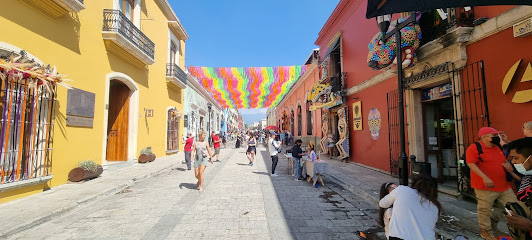
Fuente de las 8 Regiones
Discover the cultural richness of Oaxaca at the Fuente de las 8 Regiones, a stunning fountain and vibrant gathering spot that embodies local heritage.
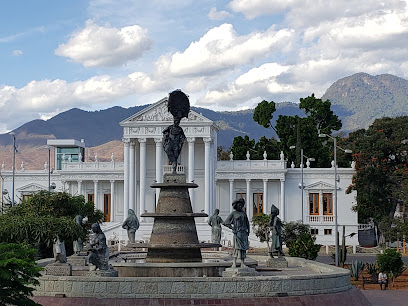
Andador Turístico
Discover the vibrant Andador Turístico in Oaxaca, a beautiful promenade filled with culture, cuisine, and captivating sights.
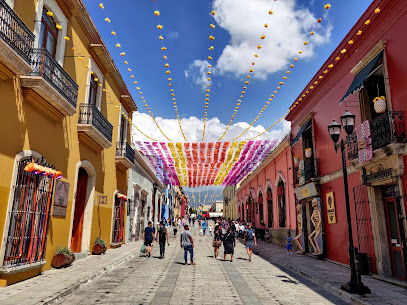
Museo Textil de Oaxaca
Explore Oaxaca's rich cultural heritage through the exquisite textile art at the Museo Textil de Oaxaca, a must-visit for art enthusiasts.
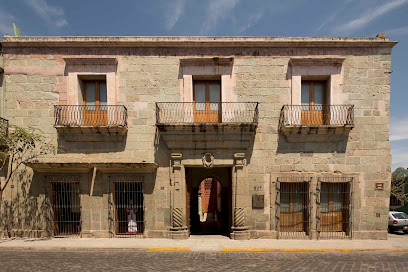
Museum of Cultures of Oaxaca, Santo Domingo
Discover the rich heritage of Oaxaca at the Museum of Cultures, showcasing diverse artifacts and vibrant traditions of this enchanting region.

Museo De La Filatelia MUFI
Explore the enchanting world of stamps and postal history at Museo De La Filatelia MUFI, a cultural treasure in the heart of Oaxaca.
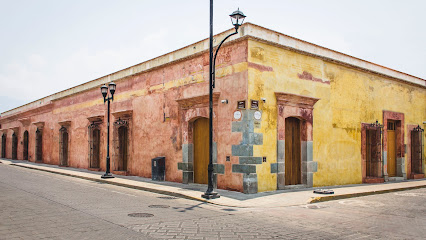
La Casa de las Artesanías de Oaxaca
Explore the rich artisanal heritage of Oaxaca at La Casa de las Artesanías, where craftsmanship meets culture in every handmade piece.
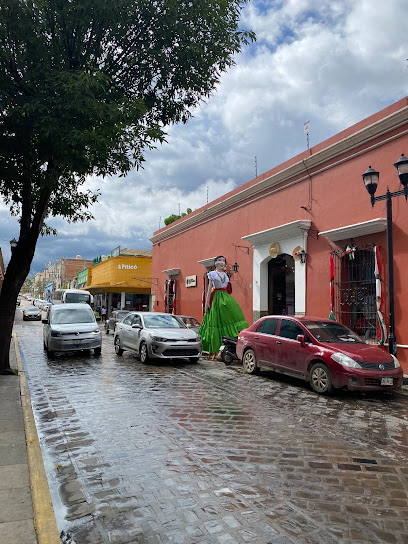
Museum of Oaxacan Painters
Discover the vibrant art scene at the Museum of Oaxacan Painters, showcasing the rich cultural heritage and creativity of Oaxaca's talented artists.
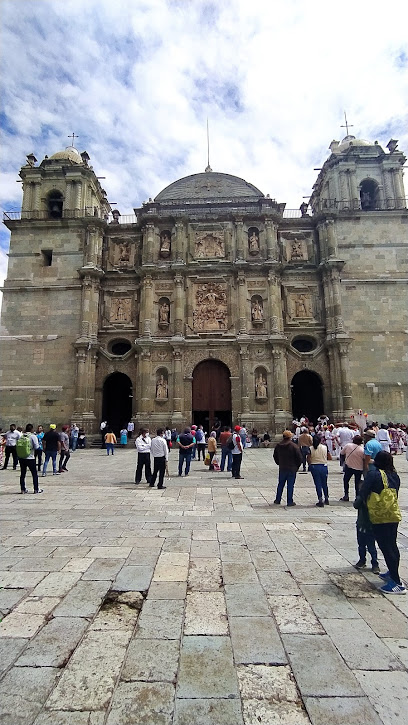
Museo de Sitio Casa Juárez
Explore the rich history of Mexico at Museo de Sitio Casa Juárez in Oaxaca, showcasing the life and legacy of Benito Juárez.
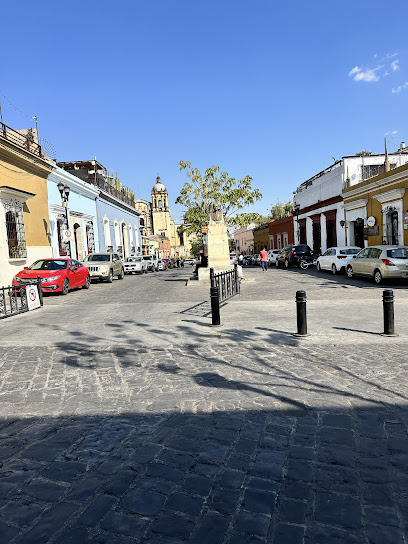
Essential places to dine
Casa Oaxaca el Restaurante
Experience authentic Oaxacan cuisine at Casa Oaxaca el Restaurante, where tradition meets innovation in every dish.

Las Quince Letras Restaurante
Experience authentic Oaxacan flavors at Las Quince Letras Restaurante in Oaxaca de Juárez – a culinary journey through tradition and taste.
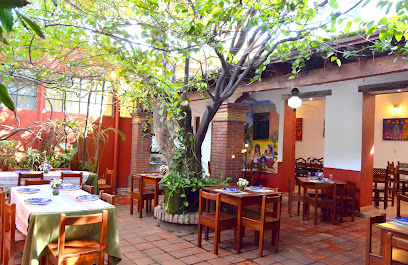
Los Danzantes
Experience exquisite Oaxacan cuisine at Los Danzantes, where tradition meets innovation in every dish.
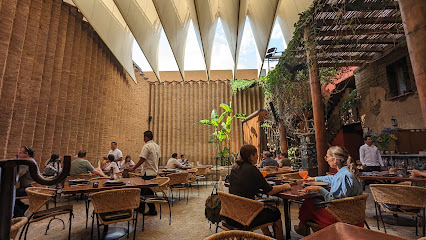
Catedral Restaurant
Experience authentic Oaxacan flavors at Catedral Restaurant, where traditional Mexican cuisine meets contemporary dining in an inviting atmosphere.
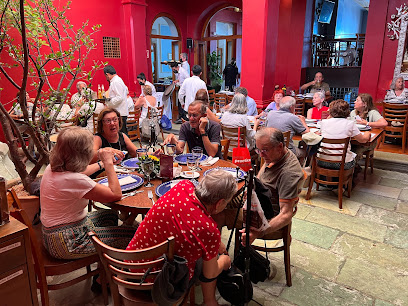
Restaurant Tierra del Sol
Experience the essence of Oaxacan cuisine at Restaurant Tierra del Sol – where tradition meets innovation in every dish.
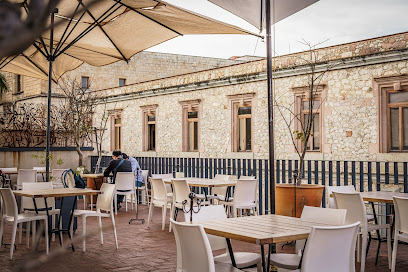
Gozobi Restaurante Bar
Experience the vibrant flavors of Mexico at Gozobi Restaurante Bar in Oaxaca – where culinary tradition meets modern flair.
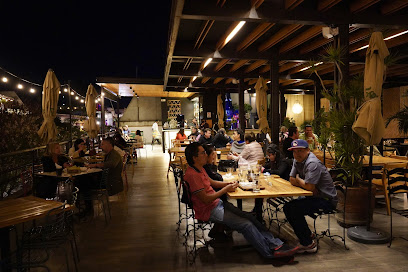
Pitiona
Discover exquisite Oaxacan cuisine at Pitiona—where tradition meets innovation in every delectable dish.
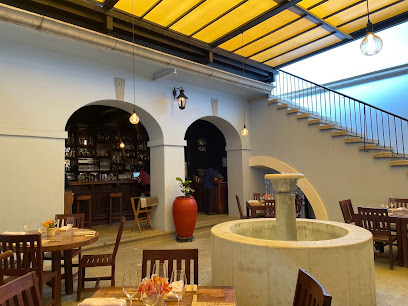
Casa Taviche
Discover authentic Oaxacan flavors at Casa Taviche, where traditional Mexican cuisine meets vibrant local culture.
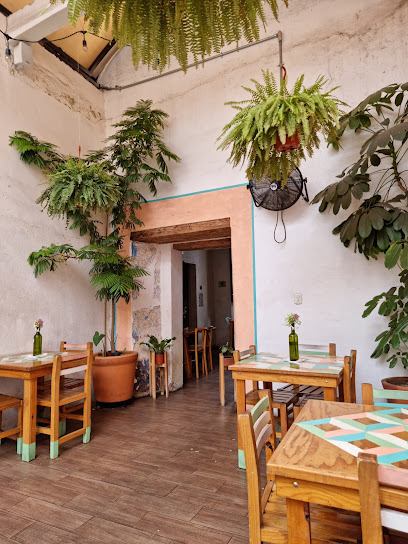
Hostería de Alcalá
Savor authentic Oaxacan cuisine at Hostería de Alcalá—where tradition meets flavor in every dish.
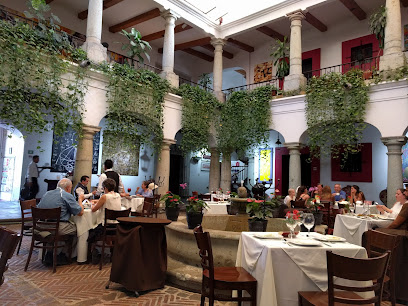
El Destilado
Experience authentic Oaxacan flavors at El Destilado, where tradition meets innovation in every dish.
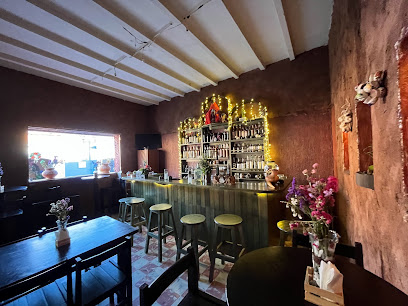
Markets, malls and hidden boutiques
Oaxaca Artisan Market
Explore the vibrant Oaxaca Artisan Market, a colorful hub of local crafts, delicious food, and the unique spirit of Mexican culture.
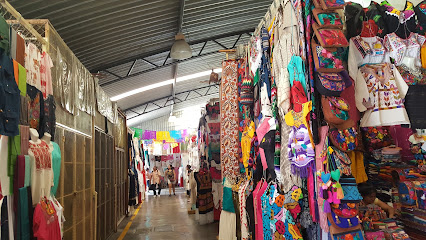
La Casa de las Artesanías de Oaxaca
Discover the heart of Oaxacan craftsmanship at La Casa de las Artesanías, where every piece tells a story of culture and tradition.
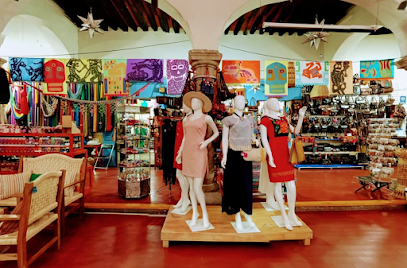
Casa de Barro
Experience the vibrant blend of shopping, dining, and art at Casa de Barro, a cultural gem in the heart of Oaxaca.
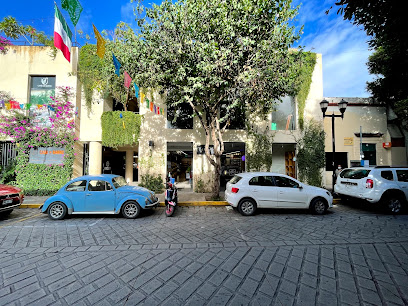
HEFESTOS moda
Explore Hefestos Moda, where contemporary fashion meets traditional Mexican craftsmanship in the heart of Oaxaca.
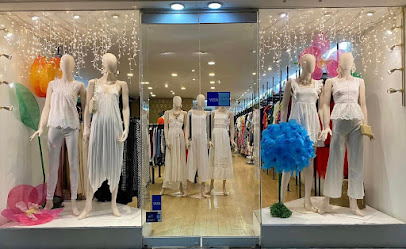
El Cuarzo Store (Smoke shop, Tabaqueria, vape, Skate shop, Graffiti shop, Street wear store)
Explore El Cuarzo, the ultimate skate and streetwear destination in Oaxaca, blending youth culture with local artistry for an unforgettable shopping experience.
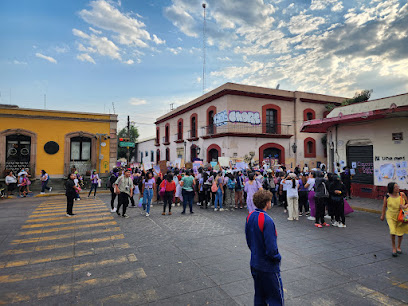
Marchanta
Explore Marchanta, Oaxaca's premier clothing store for unique, handmade fashion reflecting local artistry and culture.
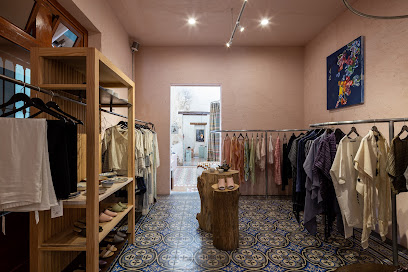
MEXCHIC
Discover MEXCHIC, Oaxaca's premier boutique offering a unique blend of fashion, home goods, and bespoke tailoring in a vibrant cultural setting.
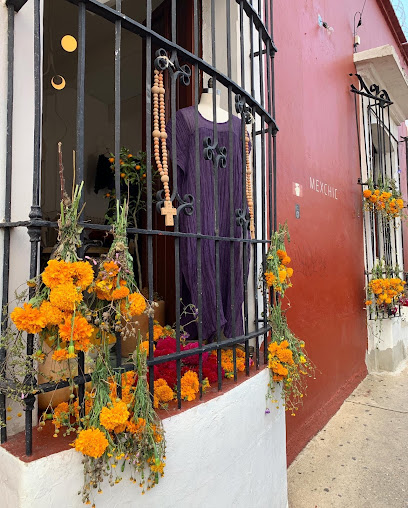
OAXAQUIANDO
Discover authentic Oaxacan souvenirs at Oaxaquiando, where local craftsmanship meets vibrant culture in the heart of Oaxaca.
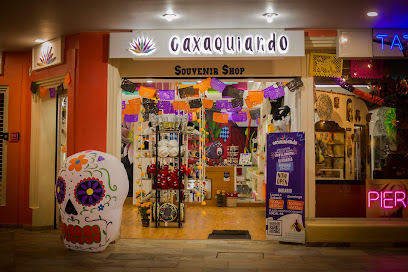
Tutu&Co
Discover authentic Mexican fashion at Tutu&Co, a charming clothing and bag shop in the heart of Oaxaca, where craftsmanship meets vibrant culture.
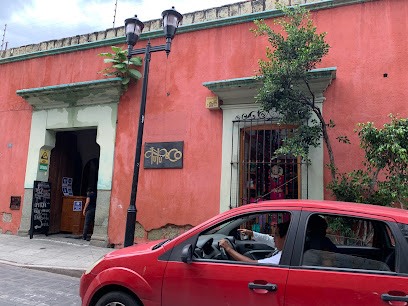
Coyuchi - Textiles Tradicionales
Discover the artistry of Oaxacan textiles at Coyuchi - Textiles Tradicionales, where tradition meets contemporary design in every handcrafted piece.

Essential bars & hidden hideouts
La Mezcalerita
Experience the rich flavors of Oaxaca at La Mezcalerita, your go-to bar for artisanal mezcal and authentic local cuisine.
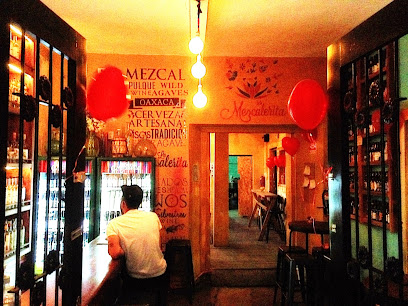
Txalaparta
Experience the vibrant nightlife of Oaxaca at Txalaparta, where lively atmosphere meets an extensive drink selection for an unforgettable evening.
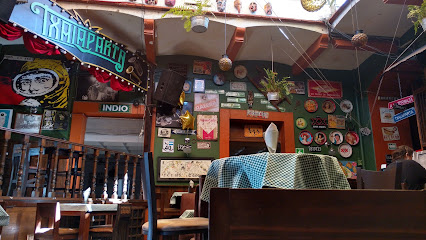
Guns & Beers Oaxaca
Discover the lively atmosphere of Guns & Beers Oaxaca, where delicious food meets vibrant live music in the heart of the city.
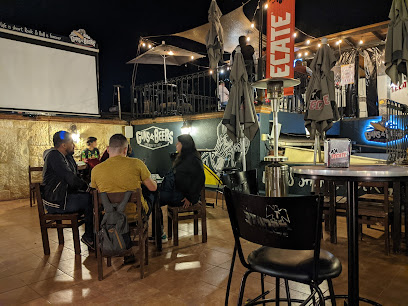
La Casa del Mezcal
Discover the essence of mezcal at La Casa del Mezcal, a vibrant bar in Oaxaca offering a vast selection of this iconic Mexican spirit.
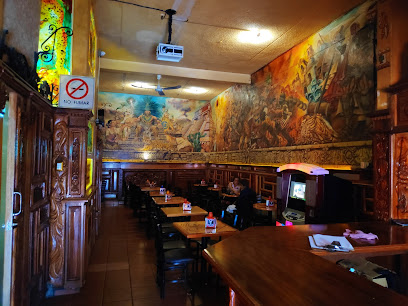
DESESTRESSE OAXACA, Drinks & Cocktails
Experience the vibrant nightlife and exquisite cocktails at DESESTRESSE OAXACA, the premier cocktail bar in the heart of Oaxaca.
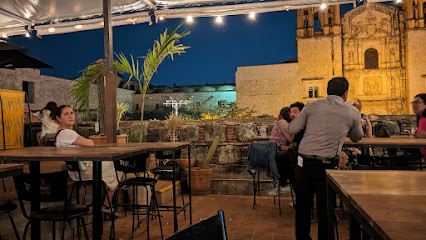
Los Amantes Mezcalería
Discover the vibrant flavors of mezcal in Oaxaca's historic center at Los Amantes Mezcalería, your gateway to authentic Mexican spirits.
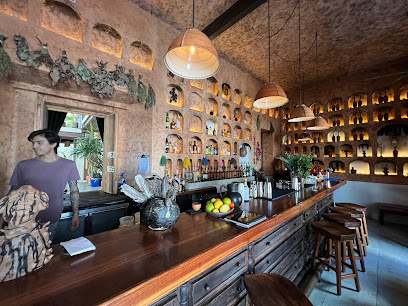
Passion Bar
Experience the vibrant culture of Oaxaca at Passion Bar, where signature cocktails meet a lively atmosphere in the heart of the city.
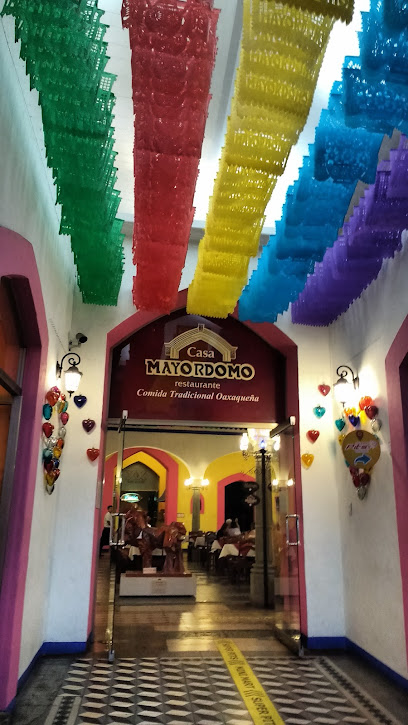
El Espacio: Cocktail, Mezcal & Agave Bar
Experience the vibrant atmosphere of El Espacio, Oaxaca's cocktail and mezcal haven, where artisanal drinks meet cultural richness.
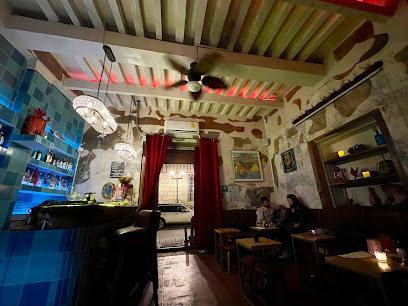
Agave Lounge
Experience the vibrant nightlife of Oaxaca at Agave Lounge, where expertly crafted cocktails meet a warm and inviting atmosphere.
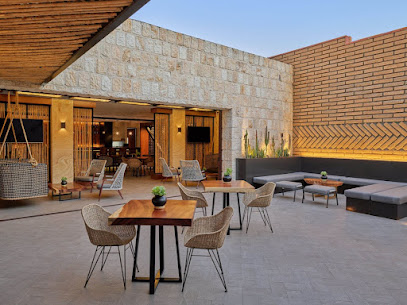
La Farola Centro Histórico
Discover the heart of Oaxaca nightlife at La Farola Centro Histórico, where vibrant local flavors and a lively atmosphere await.
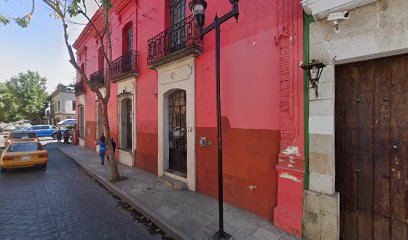
Local Phrases
-
- HelloHola
[oh-lah] - GoodbyeAdiós
[ah-dee-ohs] - YesSí
[see] - NoNo
[noh] - Please/You're welcomePor favor/De nada
[por fah-vor/deh nah-dah] - Thank youGracias
[grah-see-ahs] - Excuse me/SorryPerdón/Lo siento
[pair-dohn/loh see-en-toh] - How are you?¿Cómo estás?
[koh-moh ehs-tahs] - Fine. And you?Bien. ¿Y tú?
[bee-en. ee too] - Do you speak English?¿Hablas inglés?
[ah-blahs een-glehs] - I don't understandNo entiendo
[noh ehn-tee-ehn-doh]
- HelloHola
-
- I'd like to see the menu, pleaseMe gustaría ver el menú, por favor
[meh goo-stah-ree-ah vehr ehl meh-noo, pohr fah-vor] - I don't eat meatNo como carne
[noh koh-moh kahr-neh] - Cheers!¡Salud!
[sah-lood] - I would like to pay, pleaseMe gustaría pagar, por favor
[meh goo-stah-ree-ah pah-gahr, pohr fah-vor]
- I'd like to see the menu, pleaseMe gustaría ver el menú, por favor
-
- Help!¡Ayuda!
[ah-yoo-dah] - Go away!¡Vete!
[veh-teh] - Call the Police!¡Llama a la policía!
[yah-mah ah lah poh-lee-see-ah] - Call a doctor!¡Llama a un doctor!
[yah-mah ah oon dohk-tohr] - I'm lostEstoy perdido
[ehs-toy pair-dee-doh] - I'm illEstoy enfermo
[ehs-toy ehn-fehr-moh]
- Help!¡Ayuda!
-
- I'd like to buy...Me gustaría comprar...
[meh goo-stah-ree-ah kohm-prahr] - I'm just lookingSólo estoy mirando
[soh-loh ehs-toy mee-rahn-doh] - How much is it?¿Cuánto cuesta?
[kwan-toh kwehs-tah] - That's too expensiveEso es demasiado caro
[eh-soh ehs deh-mah-see-ah-doh kah-roh] - Can you lower the price?¿Puedes bajar el precio?
[pweh-dehs bah-hahr ehl pree-syoh]
- I'd like to buy...Me gustaría comprar...
-
- What time is it?¿Qué hora es?
[keh oh-rah ehs] - It's one o'clockEs la una
[ehs lah oo-nah] - Half past (10)Las diez y media
[lahs dee-ehs ee meh-dee-ah] - MorningMañana
[mah-nyah-nah] - AfternoonTarde
[tahr-deh] - EveningNoche
[noh-cheh] - YesterdayAyer
[ah-yehr] - TodayHoy
[oy] - TomorrowMañana
[mah-nyah-nah] - 1Uno
[oo-noh] - 2Dos
[dohs] - 3Tres
[trehs] - 4Cuatro
[kwah-troh] - 5Cinco
[seen-koh] - 6Seis
[says] - 7Siete
[syeh-teh] - 8Ocho
[oh-choh] - 9Nueve
[nweh-veh] - 10Diez
[dyehs]
- What time is it?¿Qué hora es?
-
- Where's a/the...?¿Dónde está...?
[dohn-deh ehs-tah] - What's the address?¿Cuál es la dirección?
[kwal ehs lah dee-rehk-syon] - Can you show me (on the map)?¿Puedes mostrarme (en el mapa)?
[pweh-dehs mohs-trar-meh (ehn ehl ma-pah)] - When's the next (bus)?¿Cuándo es el próximo (autobús)?
[kwan-doh ehs ehl proh-ksee-moh (ow-toh-boos)] - A ticket (to ....)Un boleto (a ....)
[oon boh-leh-toh (ah)]
- Where's a/the...?¿Dónde está...?
History of Centro Histórico
-
Centro Histórico is built upon a rich tapestry of history that dates back to the Zapotec and Mixtec civilizations, which flourished in the Oaxaca Valley. The archaeological site of Monte Albán, just a short distance from the city, served as a major urban center and political hub around 500 BCE. The ruins reflect the advanced society that developed complex hierarchies, agriculture, and trade networks.
-
The arrival of Spanish conquistadors in the 16th century marked a significant transformation for the region. In 1521, the Spanish established the city of Oaxaca, constructing the Cathedral of Our Lady of the Assumption, which still stands as a central landmark. The colonial architecture of Centro Histórico, characterized by baroque facades and cobblestone streets, exemplifies the fusion of indigenous and Spanish influences.
-
During the early 19th century, Oaxaca played a pivotal role in Mexico's struggle for independence from Spanish rule. Centro Histórico served as a backdrop for revolutionary activities, with figures such as José María Morelos, a leader of the independence movement, advocating for the rights of the indigenous population. The city became a symbol of national identity and resistance.
-
The 20th century saw a cultural renaissance in Centro Histórico, with a renewed focus on indigenous traditions and arts. The establishment of various museums and cultural institutions, such as the Museo de Arte de Oaxaca, highlighted the area’s commitment to preserving and promoting Oaxacan culture. This period also witnessed the revitalization of traditional crafts, including weaving and pottery.
-
In 1987, UNESCO recognized the historical significance of Centro Histórico by declaring it a World Heritage Site. This designation underscored the neighborhood's unique blend of colonial architecture, indigenous culture, and vibrant local traditions. The preservation efforts that followed have helped maintain the area's cultural integrity and attract tourists from around the globe.
Centro Histórico Essentials
-
Centro Histórico in Oaxaca is easily accessible from various neighborhoods. If you're coming from the airport, you can take a taxi or a pre-arranged shuttle, which typically takes about 20-30 minutes. Buses from nearby towns, such as Monte Albán and Mitla, also connect to the city center. For those staying in other neighborhoods, local taxis and rideshare services are readily available, or you can walk as many areas are within a reasonable distance.
-
Centro Histórico is a pedestrian-friendly area, making walking the best way to explore its streets. Public transport options include buses and microbuses, which connect to other neighborhoods. Biking is also a popular option, with several rental shops available. However, note that not all streets are bike-friendly due to cobblestones and pedestrian traffic. Taxis are available for longer distances or late-night travels.
-
Centro Histórico is generally safe for tourists, but standard precautions should be taken. Avoid walking alone late at night in less crowded areas, particularly around the outskirts of the neighborhood. While violent crime is rare, petty theft can occur, especially in crowded markets or tourist hotspots. Areas to be cautious of include the outskirts near the bus terminal after dark.
-
In case of emergency, dial 911 for police, fire, or medical assistance. Keep the contact information of your country's embassy or consulate handy. There are several hospitals and clinics in the area for medical emergencies. Pharmacies are widely available for minor health issues, and many pharmacists speak basic English.
-
Fashion: Do wear comfortable shoes for walking. Dress modestly when visiting religious sites. Don’t wear flashy jewelry that may attract unwanted attention. Religion: Do respect local customs, especially during religious events. Don’t take photographs in churches without permission. Public Transport: Do offer your seat to the elderly. Don’t eat or drink on public transport. Greetings: Do greet locals with a friendly 'Hola' and a smile. Don’t forget to be courteous. Eating & Drinking: Do try local dishes, particularly mole. Don’t drink tap water; opt for bottled water instead.
-
To experience Centro Histórico like a local, visit the markets early in the morning for fresh produce and local crafts. Attend cultural events at the Zócalo, where you can enjoy live music and traditional dance performances. Engage with local artisans and ask about their crafts. For a unique experience, try a cooking class to learn about Oaxacan cuisine or participate in a mezcal tasting to appreciate local spirits.
Trending Landmarks in Centro Histórico
-
Zócalo (Plaza de la Constitución)
-
Plaza de la Danza
-
Jardín Etnobotánico de Oaxaca
-
Fuente de las 8 Regiones
-
Centro Cultural San Pablo
-
Domino's Pizza
-
Holiday Inn Express Oaxaca-Centro Historico, an IHG Hotel
-
Ex Convento de San Pablo
-
EX CONVENTO DE LOS 7 PRINCIPES
-
Barrio Xochimilco, Oaxaca
-
UNESCO Centro Histórico Patrimonio Cultural de la Humanidad
-
Monumento Cruz de Piedra
-
Dirección General del Centro Historico
Nearby Cities to Centro Histórico
-
Things To Do in Puerto Escondido
-
Things To Do in Veracruz
-
Things To Do in Puebla
-
Things To Do in Acapulco
-
Things To Do in Taxco
-
Things To Do in Mexico City
-
Things To Do in Chiapas
-
Things To Do in Queretaro
-
Things To Do in San Miguel de Allende
-
Things To Do in Quetzaltenango
-
Things To Do in Chichicastenango
-
Things To Do in Lake Atitlán
-
Things To Do in Guanajuato
-
Things To Do in Panajachel
-
Things To Do in Antigua Guatemala

